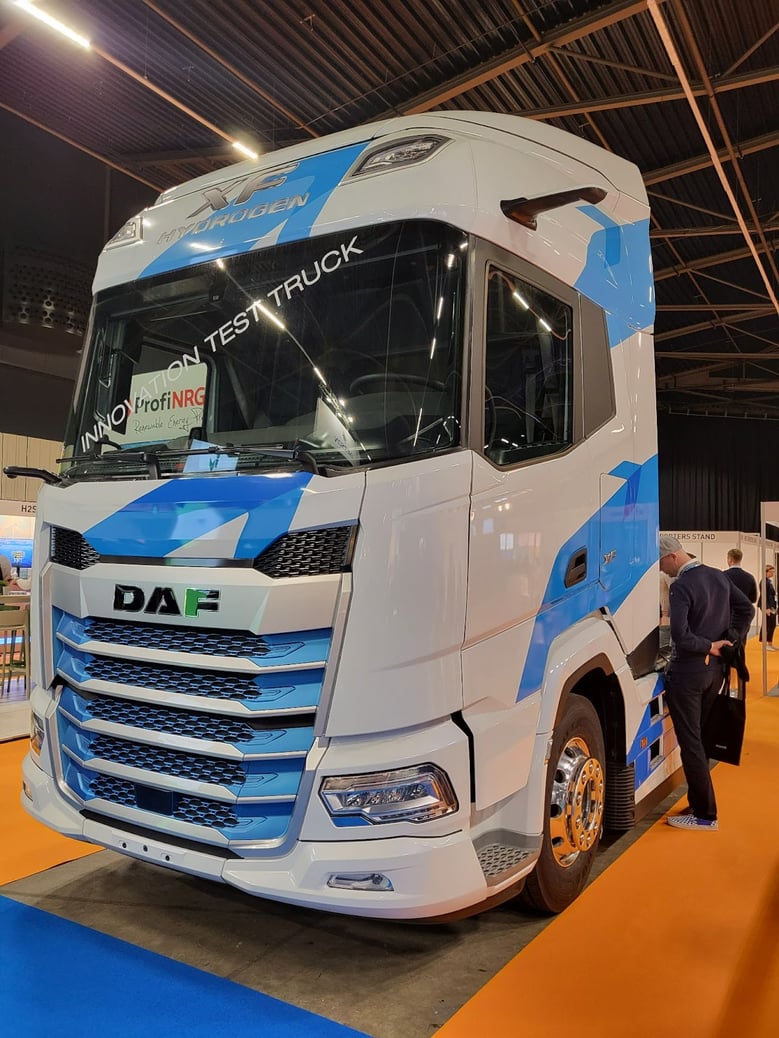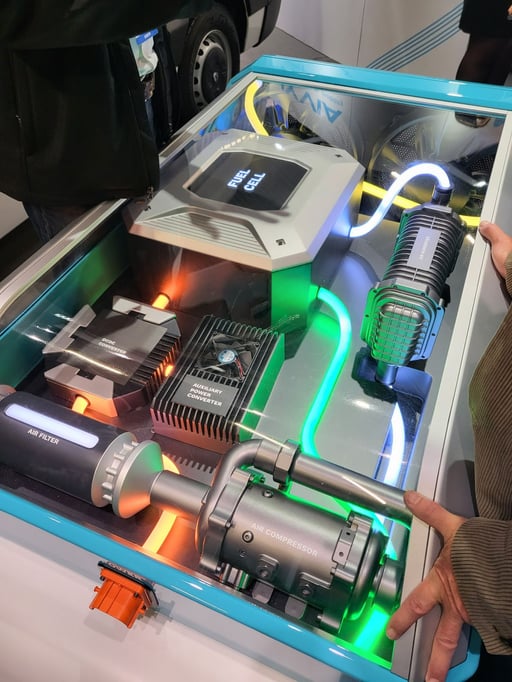Jack Colreavy
- May 16, 2023
- 5 min read
ABSI - The Hydrogen Revolution: WHS23 Insights and Trends
Every Tuesday afternoon we publish a collection of topics and give our expert opinion about the Equity Markets.

Last week I had the privilege of attending the 2023 World Hydrogen Summit (WHS23) in Rotterdam, The Netherlands. The conference centre at Ahoy Rotterdam was packed with thousands of people and over 250 organisations, all of which are critical stakeholders in the burgeoning hydrogen industry. ABSI this week will outline the three critical takeaways I had on the event.
- Countries are clambering to attract projects and investment
Amongst the bustle of the exhibition hall, where numerous companies were pitching their business plans, were representatives from governments spruiking the advantages of locating their hydrogen project or manufacturing facility within their borders. Countries with a presence included Australia, Canada, South Africa, South Korea, Denmark, Germany, the UK, the Netherlands, Czechia, and Chile. Historically, the regions that have developed energy as an export have traditionally been very wealthy countries - look at Saudi Arabia, UAE, and Australia as examples. The energy transition, particularly hydrogen which enables the export of renewable energy, presents an opportunity for the world energy order to reset and global governments are pushing their credentials, so they’re not left behind. We can see this in the generous subsidies offered and attendance/sponsorship of hydrogen conferences such WHS23.
The incumbents are extremely aware of this and are also taking steps to diversify their energy mix with the energy exports of tomorrow. For example, Australia has a track record of being an energy exporter through coal and natural gas. Demand for these products will wane with time so the Federal and State governments are encouraging hydrogen as an export commodity. The budget last week, whilst light on detail, announced the establishment of a A$2 billion headstart program to encourage the development of hydrogen export production facilities.
2. Mobility is attracting a lot of attention
Hydrogen is referred to as the swiss army knife of energy due to the array of applications - power generation, automobiles, aviation, maritime, agriculture, and astronautics, to name a few. At WHS23 it was clear that mobility is pulling ahead as an area whereby hydrogen can make a material impact to the decarbonisation of society. I believe this is due to two critical reasons. Firstly, mobility is one of the biggest sources of GHG and continues to grow at the fastest rate due to more cars, trucks, planes, and ships being deployed. Prioritising the decarbonisation of the biggest carbon emitters, such as electricity generation and mobility, is the best use of limited resources. Secondly, battery electric vehicles (BEVs) are proven to be one solution to carbon-free car transport for retail users but there are deficits in the technology that make it difficult to adopt for commercial autos, maritime, and aviation. While less efficient than batteries, hydrogen can account for those deficiencies and provide a zero-carbon solution for these areas of mobility.

My highlight was the showcase of the H2X Global Warrego ute/pick up on display in the “Hydrogen in Action” stage and it seemed to be a crowd favourite too with a steady stream of onlookers enquiring about the specifications of the vehicle from range to top speed. Other notable mobility technologies on show came from BorgWarner, Hyvia, and DAF.

3. Hydrogen technology is rapidly improving
Despite hydrogen being industrially produced for over 100 years, there has been very little advancement in the efficiency of the technology. This is due to hydrogen historically being produced from fossil fuels through a gasification process not through an electrolyser or converted back to energy through a fuel cell. Therefore, green hydrogen technology for production and end-use is still considered a nascent technology. Just like with solar panels, investment is going into improving this technology and breakthroughs are being made to bring down the cost and improve the efficiency of the hydrogen supply chain. Current electrolyser efficiency for PEM electrolysers is ~80%, however the theoretical efficiency limit is 94%. With time and R&D expenditure, it is expected that improvements in efficiency to the theoretical limit will be made.
It was very interesting to hear from exhibitors about the technologies being developed with a mindset that every little improvement counts. I had an in-depth conversation with the team from Hygro which are developing hydrogen wind turbines that are able to improve the hydrogen production process by converting the energy from the turbine directly into hydrogen and forgoing the need for DC to AC conversion and other transmission losses.
Several years ago it was heavily debated whether hydrogen will play a role in the future energy mix in any capacity; there was high uncertainty. Today we have reached a point where there is a consensus that hydrogen has an important role and the conversation now turns to what/how. As mentioned previously, I believe the best uses for green hydrogen will be for existing industries that already rely heavily on grey hydrogen, namely fertiliser production, and to decarbonise our biggest GHG emitting industries through large-scale renewable energy storage and mobility. The future looks bright for the hydrogen industry.
We offer value-rich content to our BPC community of subscribers. If you're interested in the stock market, you will enjoy our exclusive mailing lists focused on all aspects of the market.
To receive our exclusive E-Newsletter, subscribe to 'As Barclay Sees It' now.
Share Link







